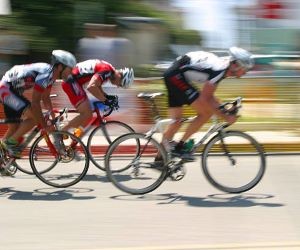Explore the best cycling and bike touring routes in Raleigh, from scenic greenways to wooded trails and smooth city rides—perfect for a vacation on two wheels.
HOW DO I PREPARE FOR MOUNTAIN BIKING COMPETITIONS?
Mountain biking competitions demand a unique blend of power, technical skill, and mental resilience. Riders face steep climbs, unpredictable descents, and variable terrain that test both body and mind. Preparing effectively goes beyond logging miles—it requires structured training, equipment tuning, nutrition planning, and race-day tactics. Competitors who approach preparation systematically not only reduce the risk of crashes or mechanicals but also maximize their performance under pressure. This article explores how to prepare comprehensively for mountain biking events, whether cross-country, enduro, or downhill, with strategies drawn from pro-level practices and science-backed training methods.

Building fitness and skills
Fitness is the foundation of mountain bike racing, but technical handling skills often decide results. Successful preparation balances endurance, strength, and bike-handling drills. Riders who train exclusively on the road may lack the agility for off-road challenges, while those who only practice technical trails may miss the stamina required for competition.
Training priorities for MTB success
Structured workouts should include endurance rides to build aerobic capacity, interval sessions for climbing power, and gym work for core and leg strength. Skill sessions on trails develop handling confidence, focusing on cornering, braking, and body positioning on technical terrain.
Endurance rides of 2–4 hours for aerobic base.
Intervals on steep climbs to simulate race intensity.
Core and lower-body strength training 2–3 times per week.
Skill practice on local trails to refine control and agility.
Consistency is key. Building both fitness and technical skills simultaneously prepares riders for the unpredictable demands of competition.
Dialing in equipment
The right equipment setup can mean the difference between a smooth ride and a race-ending mishap. Mountain biking places unique stress on bikes, so gear must be tuned and tested ahead of race day. Attention to detail minimizes mechanical risks and maximizes efficiency on challenging terrain.
Bike setup and maintenance
Suspension should be adjusted to rider weight and terrain, with sag set correctly for optimal performance. Tire choice depends on course conditions—knobbier treads for mud, faster-rolling options for dry hardpack. Drivetrain, brakes, and wheel bearings must be inspected and serviced before competition.
Set suspension sag at 25–30% for balance between comfort and control.
Choose tubeless tires to reduce flats and allow lower pressure.
Check brake pads and bleed hydraulic systems if needed.
Carry a multi-tool, CO₂, and quick links during the race.
Race-day gear essentials
Helmet and protective gear are non-negotiable. For enduro or downhill, full-face helmets and pads add crucial protection. Hydration packs provide easy access to fluids and tools without stopping. Riders should test every piece of gear in training to avoid surprises during competition.
Well-prepared equipment builds confidence, letting riders focus fully on performance instead of worrying about mechanicals.
Nutrition and mental strategies
Fueling the body and sharpening the mind are as critical as fitness and equipment. Mountain biking races often last several hours, demanding both steady energy and tactical focus. Riders who neglect nutrition or mental preparation risk fading or panicking under pressure.
Nutrition for race performance
Carbohydrate-rich meals before the race ensure glycogen stores are topped up. During competition, riders should aim for 30–60 grams of carbs per hour, consumed through gels, chews, or energy drinks. Electrolytes prevent cramping, particularly in hot conditions. Recovery nutrition—protein and carbs within 30 minutes—accelerates adaptation for future races.
Eat balanced meals with carbs and protein leading into race day.
Consume carbs consistently throughout the race.
Hydrate with electrolytes, not just water.
Prioritize recovery meals to support adaptation.
Mental toughness and tactics
Competitions test not only physical limits but also mental focus. Visualization, controlled breathing, and breaking the race into segments help manage pressure. Riders should expect setbacks—mechanicals, crashes, or fatigue—and practice quick recovery strategies. Staying composed allows smarter tactical decisions, like when to conserve energy and when to attack.
Ultimately, preparation for mountain biking competitions is holistic. Fitness, equipment, nutrition, and mindset combine to create a resilient rider capable of meeting the toughest challenges head-on.
YOU MAY ALSO BE INTERESTED






